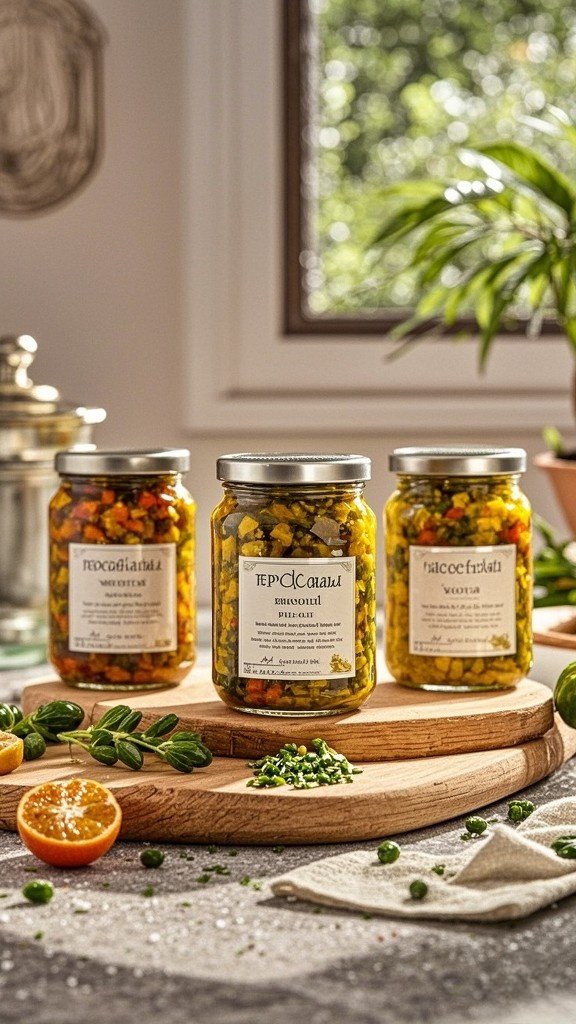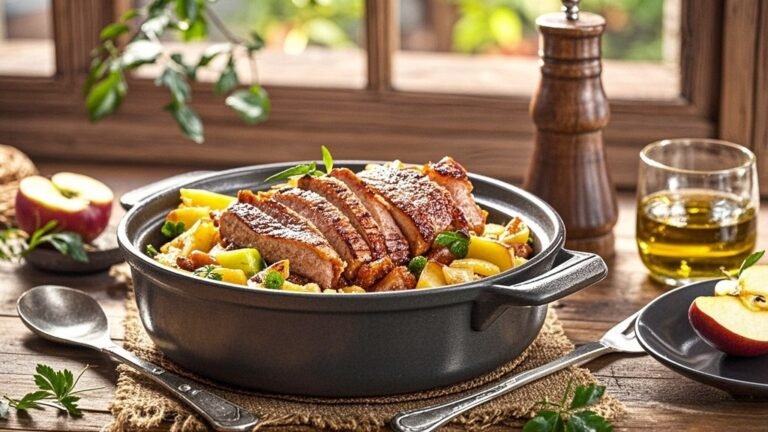Mary berry piccalilli
mary berry piccalilli
I. Introduction
Mary Berry is a well-loved figure in British cooking. She is known for her friendly nature, cooking skills, and easy-to-follow recipes. Many people cook differently because of her influence. One of her popular recipes is piccalilli, a tasty and tangy sauce that goes well with many foods. People enjoy piccalilli for its comforting and nostalgic taste, and it is often served with cold meats, cheese, or in sandwiches. This recipe includes some background information and nutritional facts, and it also has a vegan version to suit different diets.

II. Mary Berry’s Unique Approach & Historical Context
Mary Berry highlights the importance of using good ingredients in her cooking. For her piccalilli, she chooses fresh vegetables and a mix of spices to create a bright and true flavor. Piccalilli has its beginnings in 18th century England, influenced by Indian pickling techniques. The name “piccalilli” is thought to come from the Indian word “pickles,” showing its origins.
Mary Berry’s recipe follows a rich tradition while adding her own style. She often uses a blend of traditional and modern spices, which gives it a more interesting flavor. By balancing the sharpness of vinegar with the sweetness of sugar and the spiciness of mustard, her piccalilli is tangy and enjoyable, making it a great side for many meals.

III. Notices on Ingredients & Equipment
Ingredients
- Cauliflower: 1 small head (broken into small florets)
- Brussels Sprouts: 200g (trimmed and halved)
- Green Beans: 150g (trimmed and cut into 2.5cm pieces)
- Carrot: 1 large (peeled and diced)
- Onion: 1 medium (finely chopped)
- Fresh Ginger: 1 tablespoon (grated)
- Turmeric Powder: 1 teaspoon
- Cayenne Pepper: ¼ teaspoon (adjust to taste)
- White Wine Vinegar: 300ml
- Granulated Sugar: 100g
- Mustard Powder: 2 tablespoons
- Salt: 1 teaspoon
- Ground Black Pepper: ½ teaspoon
Equipment
- Large mixing bowl
- Saucepan
- Jars for storing piccalilli
- Wooden spoon
- Chopping board
- Chef’s knife
IV. Recipe Instructions
Prepare the Vegetables: Begin by washing and preparing all your vegetables. Break the cauliflower into small florets, trim and halve the Brussels sprouts, cut the green beans, and dice the carrot. After this, Finely chop the onion and grate the fresh ginger.

Blanch the Vegetables: In a large saucepan, bring water to a boil. Add the cauliflower, Brussels sprouts, green beans, and carrot. Blanch the vegetables for about 3-4 minutes until slightly tender, then drain and set aside to cool.

Make the Pickling Liquid: In the same saucepan, combine the white wine vinegar, sugar, mustard powder, grated ginger, turmeric, cayenne pepper, salt, and black pepper. Bring the mixture to a gentle simmer, stirring until the sugar has dissolved completely.

Combine the Vegetables and Pickling Liquid: Once the pickling liquid is ready, add the blanched vegetables to the saucepan. Stir well to ensure the vegetables are coated in the liquid. Remove from heat and allow to cool slightly.

Transfer to Jars: Using a clean spoon, transfer the mixture into sterilized jars, packing the vegetables tightly. Pour the pickling liquid over the vegetables until they are fully submerged. Seal the jars with lids.

Allow to Mature: Let the jars sit at room temperature for about 24 hours before placing them in the refrigerator. Allow the piccalilli to mature for at least one week before consuming for the best flavor.
V. Flavor Profile & Nutritional Information
Mary Berry’s piccalilli offers a tangy and slightly sweet flavor with a subtle heat from the spices. The crunch of the vegetables adds to the overall texture, making it a delightful condiment for various dishes.
Nutritional Breakdown (per serving, based on 1 tablespoon serving size):
- Calories: 30
- Fat: 0g
- Protein: 0g
- Carbohydrates: 7g
- Sugar: 5g
- Fiber: 1g
- Sodium: 100mg
(Note: The nutrition facts can change depending on the brands and amounts of ingredients you use.)
VI. Tips for a Perfect Piccalilli
- Troubleshooting Common Issues: If your piccalilli is too watery, ensure that the vegetables are well-drained after blanching. You can also reduce the pickling liquid further to thicken it.
- Enhancing Flavor and Texture: Feel free to experiment with additional spices like coriander seeds or fenugreek for a more complex flavor profile.
- Suggesting Variations: Consider adding other vegetables such as radishes or bell peppers for variety. You can also adjust the level of heat by varying the cayenne pepper.
VII. Alternative Recipes
Vegan Piccalilli
Ingredients
- The same ingredients listed above, ensuring all are plant-based.
Instructions
- Follow the same steps as the traditional recipe, ensuring that all ingredients used are vegan-friendly.
VIII. Recipe Variations & Serving Suggestions
Serve piccalilli as a condiment with cold meats, cheese platters, or in sandwiches. It can also be used to enhance salads or grain bowls for added flavor.
IX. Storage & Reheating Instructions
Store the piccalilli in the refrigerator for up to approximately 3 months. There is no need to reheat; it is best enjoyed cold or at room temperature.
X. Frequently Asked Questions (FAQ)
- Can I make piccalilli in advance? Yes, piccalilli is best made in advance as it improves in flavor over time. Aim for at least a week of maturation before consuming.
- Can I use other vegetables? Absolutely! Feel free to incorporate your favorite vegetables into the mix.
- How long does piccalilli last? When stored properly in the refrigerator, piccalilli can last for several months.
XI. Conclusion & Call to Action
Mary Berry’s Piccalilli is a delightful and versatile condiment that adds flavor to a wide range of dishes. We encourage you to try this recipe and share your feedback with us. Explore other delicious recipes on our website to continue your culinary journey!






